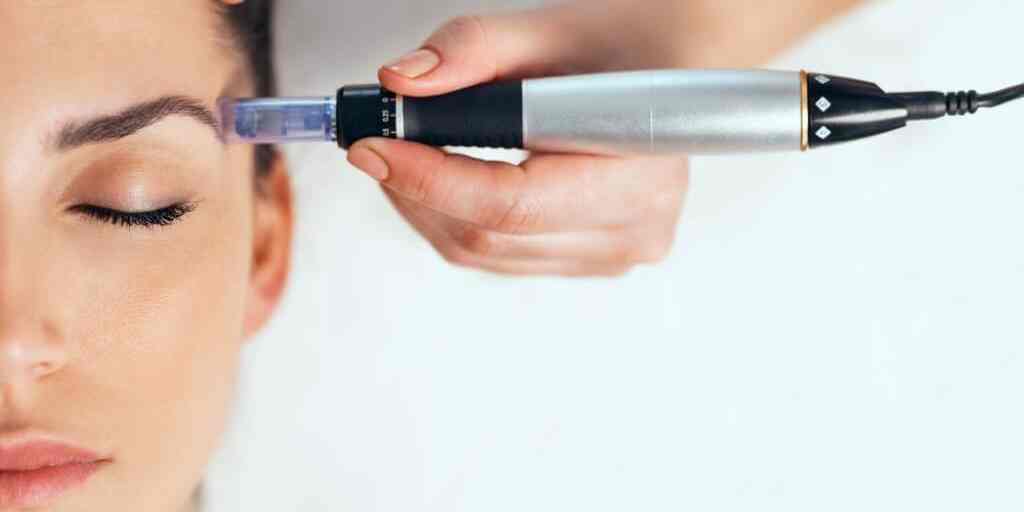Dealing with acne scars is a frustrating and overwhelming experience, especially for teens and young adults. Conventional treatments such as topical creams, laser resurfacing, and chemical peels are often temporary, ineffective, or too invasive for acne scarring.
Fortunately, modern dermatology has evolved to offer a more advanced and effective solution: Microneedling. Microneedling is a minimally painful and highly effective procedure that promotes collagen production, improves skin texture and tone, and reduces the appearance of acne scarring.
In this blog post, we’ll explore the truth about microneedling for acne scars and understand why it’s the go-to treatment for acne scarring.
What is Microneedling, and How Does it Work?
Microneedling, also known as collagen induction therapy, is a minimally invasive skin procedure. It involves the use of a device consisting of fine needles to puncture the skin’s surface to create micro-injuries or channels.
These tiny channels stimulate the skin’s natural healing process and promote the production of collagen, a protein that is essential for healthy, youthful-looking skin. The result is smoother, firmer, and brighter skin with reduced scarring, hyperpigmentation, and enlarged pores.
What Does Microneedling Do for Acne Scars?
Microneedling for acne scars is a simple and safe procedure that works by creating tiny punctures on the surface of the skin.
Depending on the depth of the scarring, the length of the needles can vary. The microneedles cause “controlled injury” to the skin, triggering the body’s natural healing response which initiates the production of collagen and elastin.
The additional stimulation and production of collagen with the use of microneedling may boost the skin’s ability to heal and reduce the visibility of acne scars. The new collagen-rich layer of skin created through microneedling makes the scars much less noticeable.
Is Microneedling Good for Acne Scars?
Microneedling has proven effective in addressing many types of acne scars, including atrophic, hypertrophic, and post-inflammatory hyperpigmentation scarring. The procedure also helps to even out skin tone and reduce the appearance of fine lines and wrinkles.
The significant advantages are that there is no downtime and minimal pain involved in this procedure. Patients may experience some redness and minimal pinpoint bleeding immediately after the procedure is completed — however, this will typically subside within a day or two.
Does Microneedling Work for Acne Scars?
The success rate of microneedling for acne scars is high. On average, it can take at least four to six weeks for patients to observe the appearance of new collagen and up to six months to see notable improvements in acne scars.
There are a few cases where patients may not see significant improvement despite undergoing multiple treatments. This outcome could be due to various factors, such as the severity of the scars, the patient’s skin type, and general health.
It is important to consult a skilled and experienced cosmetic dermatologist to determine if microneedling is the best next step for you.
Is Microneedling Painful?
Contrary to popular belief, microneedling is not a painful procedure. Topical numbing cream is applied to ensure that the patient is comfortable during the process.
The procedure takes about 30 minutes to an hour, depending on the size of the treatment area, and the patient may experience some redness and mild swelling for a few hours after the treatment. However, this is temporary, and the patient can resume daily activities soon after the procedure.
How Many Microneedling Sessions for Acne Scars Are Required?
The number of sessions required for optimal results varies depending on the extent of the scarring and the patient’s skin condition. Generally, a series of 3 to 6 treatments, spaced 4 to 6 weeks apart, is recommended to achieve maximum collagen stimulation and skin rejuvenation. Many patients notice a significant improvement in their skin texture after the first treatment itself.
What Does Post-Microneedling Look Like?
After microneedling, patients can expect their skin to look and feel tighter, brighter, and smoother. They may experience some redness, mild swelling, and dryness, which can be easily managed with moisturizers and sunblock.
It is important to avoid direct exposure to the sun and to use protective clothing to prevent sun damage. Patients can resume their daily skincare routine after 24 hours, but they should avoid any harsh or abrasive skincare products for at least a week post-treatment.
Who Should Consider Microneedling for Acne Scars?
Microneedling is an excellent treatment option for anyone who suffers from acne and acne scarring. It is a safe, affordable, and effective alternative to conventional acne scar treatments that can cause discomfort, downtime, and side effects. Microneedling is also suitable for individuals with fine lines, wrinkles, sun damage, and mild to moderate skin laxity.
Is Microneedling The Right Method?
Microneedling for acne scars has revolutionized the way we treat acne-prone skin. It provides fast, safe, and consistent results without causing any pain, discomfort, or significant downtime.
At TS Skin Care, we are committed to delivering the best possible solutions for our client’s skin concerns, especially acne and acne scars.
Say goodbye to harsh and ineffective acne treatments and welcome a new era of skin rejuvenation with microneedling. Book an appointment with us today.
Contact TS Skin Care to learn more about our microneedling for acne scars treatments today!







